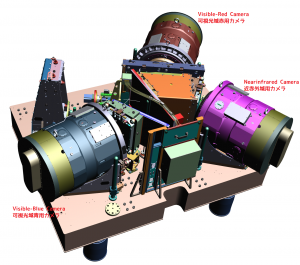The topic of this post is the development of the Near-Infrared Camera Units at Johns Hopkins University.
Each Spectrograph module of the PFS project equips three cameras — visible-blue, visible-red and near-infrared — to take spectra whose wavelength ranges from 380 nm to 1260 nm with a single shot. Johns Hopkins University (JHU) and Princeton University (PU) in the United States of America are responsible for entire integration of the near-infrared camera units, both for cryostats and optics inside (*).
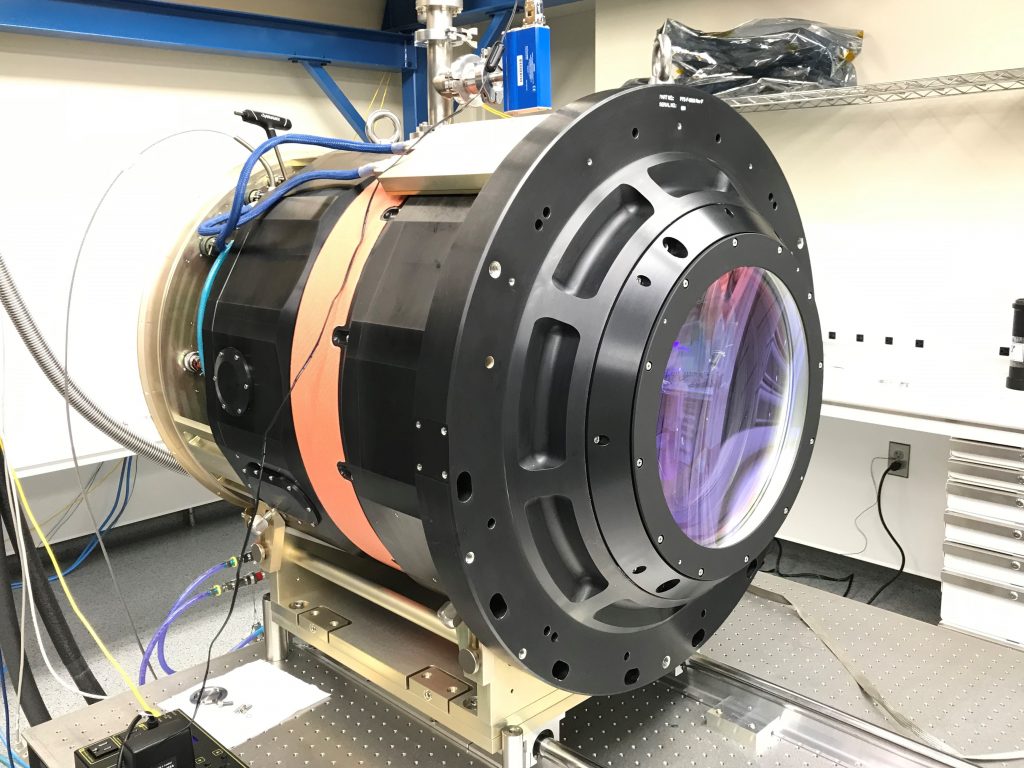
In near-infrared band, anything with heat emit lights, so even materials which look “dark” in visible band can be bright “light sources” in near-infrared. That is, components inside the camera can be extra light sources and bring additional noise on detector. To prevent this, the PFS near-infrared camera units have a part called “radiation shield” to shut out extra lights coming from the inner wall. Some lens and mirrors have a special coating to cut extra light whose wavelength is outside of our target.
At JHU, integration has been proceeding in staged manner: (1) basic functionality test such as pumping, cooling and control, (2) optical alignment test, and (3) final integration and performance test. At present, JHU and PU are carrying out the optical alignment test of the first camera unit using lenses optically the same design as those used in operation. With the dedicated device to take pin hole spots on the whole area of the detector, they are checking if the alignment of the camera is as expected by looking into the focal position, spot shape and so on.
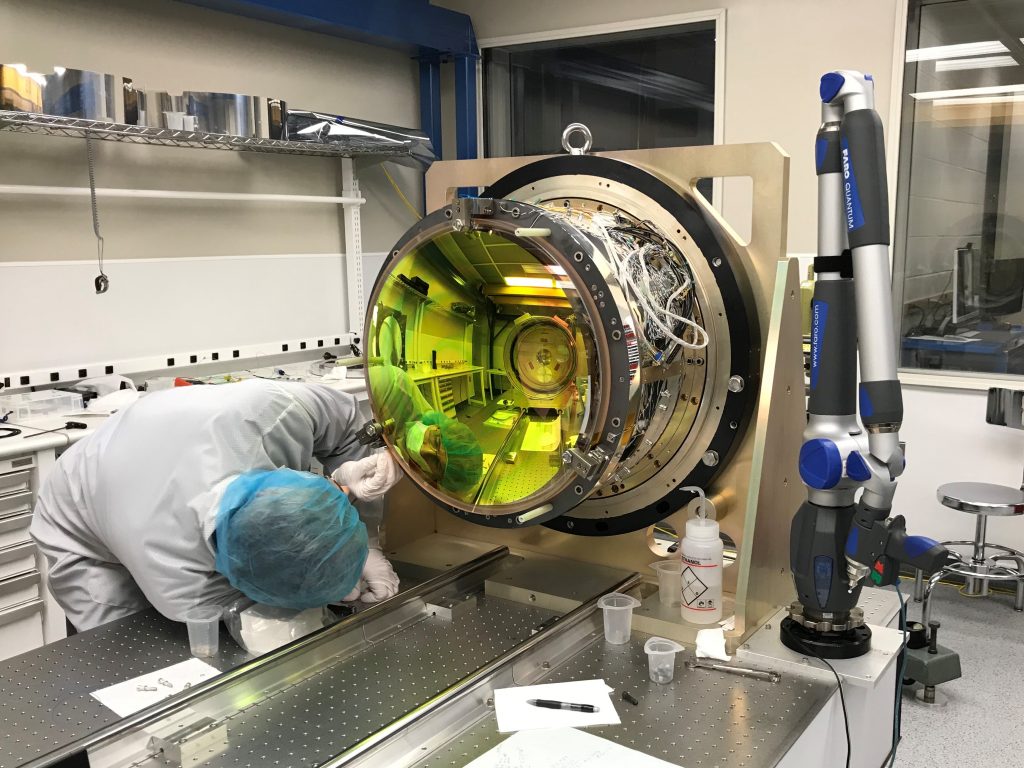
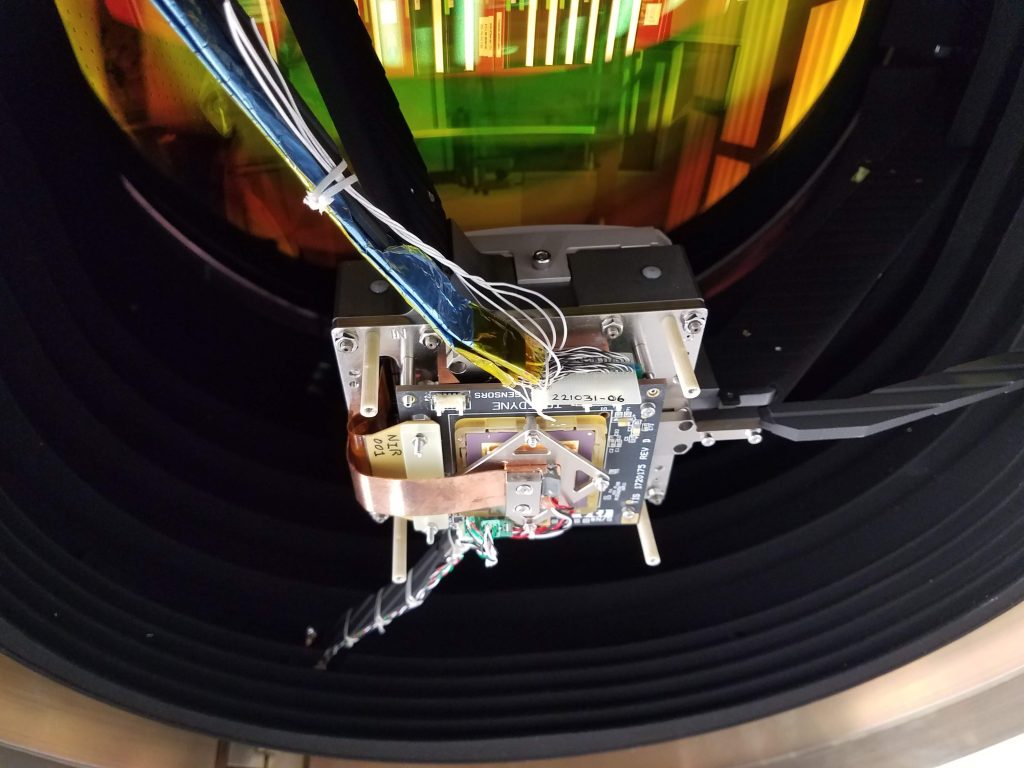
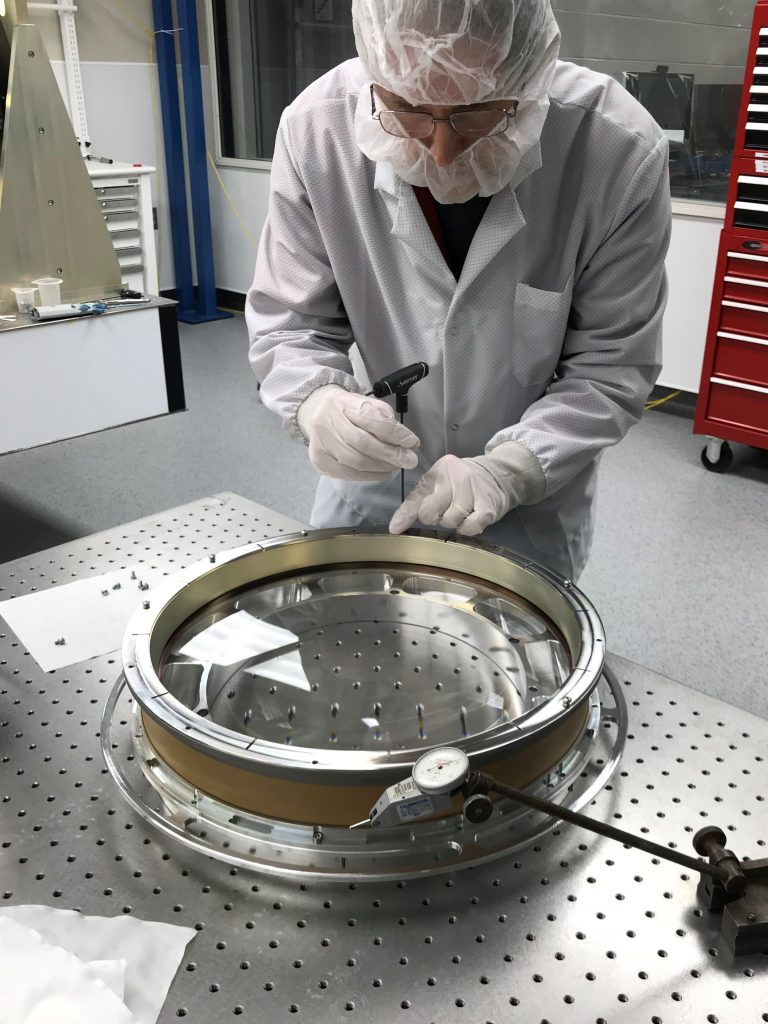
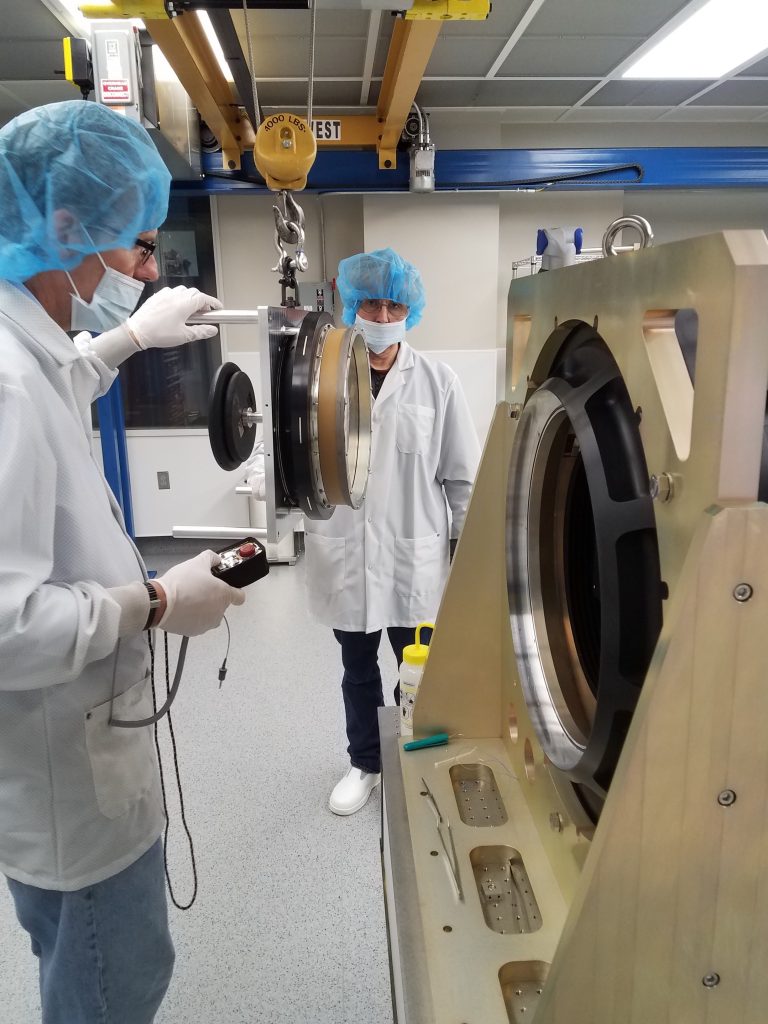
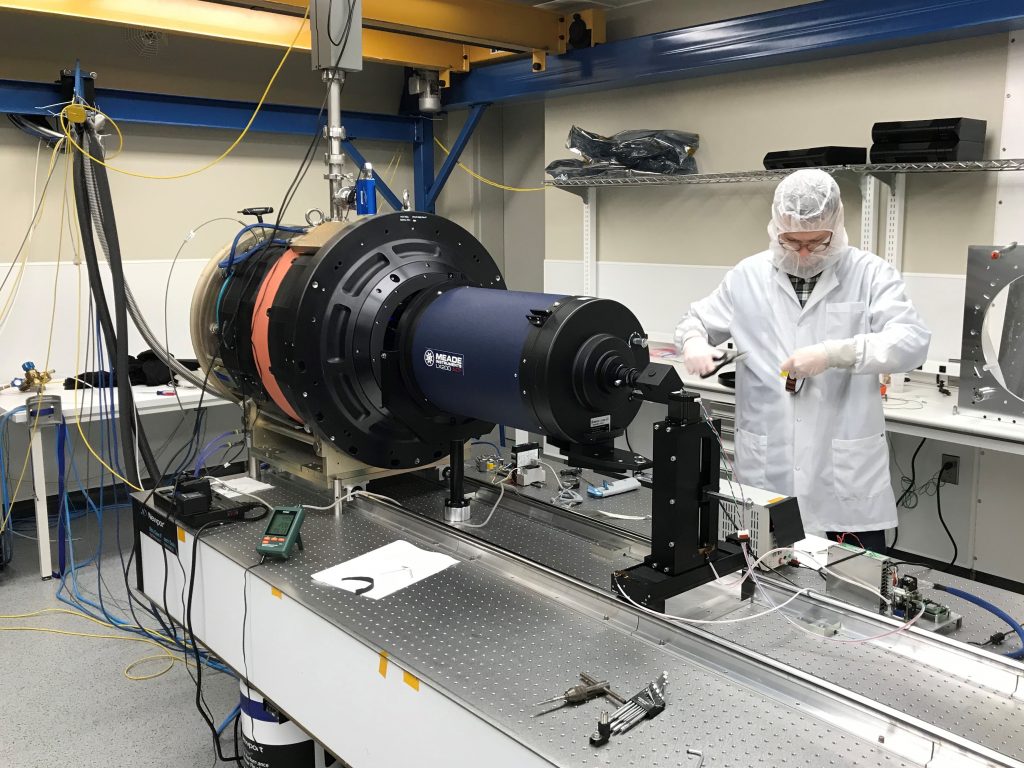
The spread of novel coronavirus disease prevents us from working at laboratories — all PFS institutes are working at home, except for Taiwan (as of 15 April 2020). However, fortunately testing the near-infrared camera is on-going remotely. Controlling the camera, testing the devices, and taking data remotely, we are having on-line discussions about image quality, alignment, and how to improve them.
* For Visible blue and red cameras, JHU and PU are responsible only for cryostat and detectors. Assembly of optics inside the camera is done by Laboratoire d’Astrophysique de Marseille (LAM) and whose partner, Winlight.

